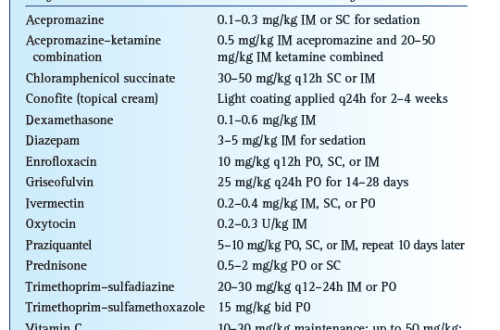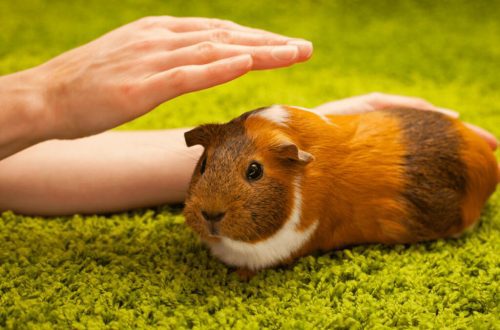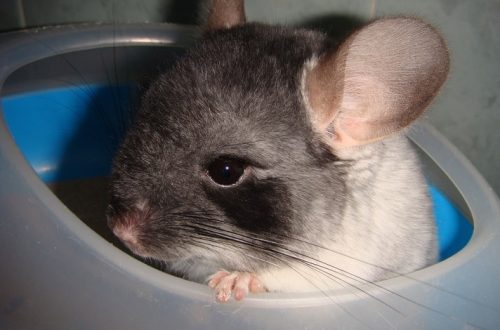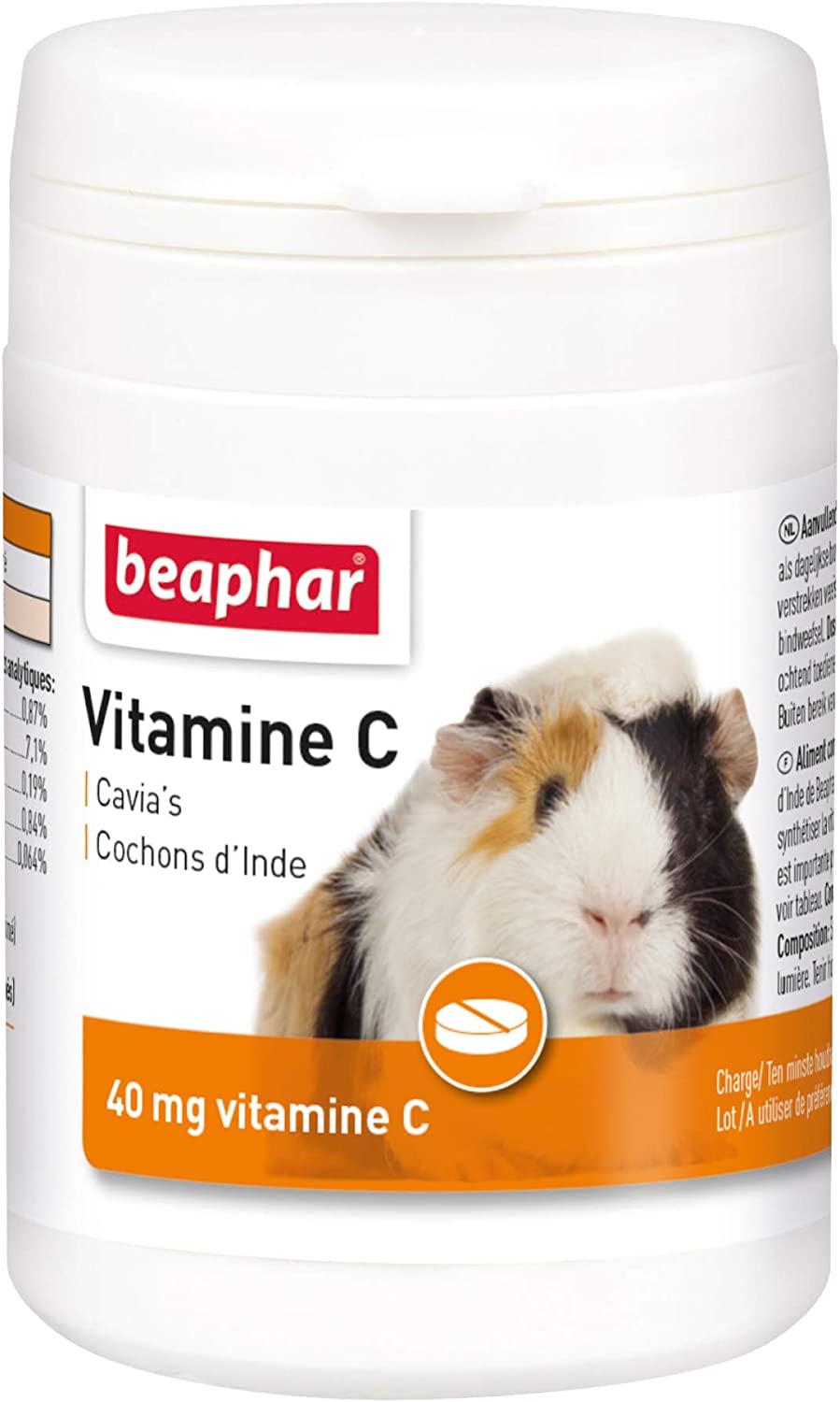
Vitamin C for guinea pigs
Vitamin C This is the most important vitamin for guinea pigs!
The guinea pig, along with humans and lemurs, is a mammal whose body cannot produce vitamin C on its own, therefore, like humans, guinea pigs need a sufficient amount of this vitamin from outside with food. A lack of vitamin C can lead to various unpleasant health consequences. The ultimate vitamin C deficiency is scurvy.
The required amount of vitamin C for guinea pigs is 10-30 mg daily. Pregnant, lactating, young and sick guinea pigs need more.
The opinions of breeders regarding vitamin C, as usual, differ: one half believes that a complete and high-quality diet provides a sufficient amount of vitamin C for a pig, the other half is convinced that it is necessary to give the vitamin in addition in the form of supplements.
Almost all guinea pig food and pellets sold in pet stores are fortified with vitamin C, but unfortunately this vitamin is unstable and degrades over time. Storing the granules in a cool, dark place helps keep the vitamin longer. But you will never be able to tell exactly how long and under what conditions the food was stored in the store.
Vitamin C This is the most important vitamin for guinea pigs!
The guinea pig, along with humans and lemurs, is a mammal whose body cannot produce vitamin C on its own, therefore, like humans, guinea pigs need a sufficient amount of this vitamin from outside with food. A lack of vitamin C can lead to various unpleasant health consequences. The ultimate vitamin C deficiency is scurvy.
The required amount of vitamin C for guinea pigs is 10-30 mg daily. Pregnant, lactating, young and sick guinea pigs need more.
The opinions of breeders regarding vitamin C, as usual, differ: one half believes that a complete and high-quality diet provides a sufficient amount of vitamin C for a pig, the other half is convinced that it is necessary to give the vitamin in addition in the form of supplements.
Almost all guinea pig food and pellets sold in pet stores are fortified with vitamin C, but unfortunately this vitamin is unstable and degrades over time. Storing the granules in a cool, dark place helps keep the vitamin longer. But you will never be able to tell exactly how long and under what conditions the food was stored in the store.
Contents
How to give vitamin C to guinea pigs?
Many veterinarians strongly recommend giving their guinea pigs extra vitamin C and claim that this vitamin cannot be overdosed! But we still strongly urge all breeders to a reasonable approach. You can not give vitamin C all the time: you need to observe the frequency (for example, give vitamin C for a week, skip a week). And someone stretches the frequency for quarters and gives the vitamin only in winter, when there is little sunlight and fruits and vegetables.
How to give vitamin C to guinea pigs? Options are as follows:
- liquid vitamin c
- vitamin C tablets
All dosage forms of the vitamin are sold in pharmacies.
Liquid Vitamin C
Liquid vitamin C is given to guinea pigs in two ways:
Method No.1: add a few drops (according to the indicated dosage) to the drinker
Method No.2: draw the solution into a syringe (without a needle) and inject orally.
There are several varieties of liquid vitamin C.
1. Liquid vitamin C specifically for rodents (or other animals), which can be bought at a veterinary pharmacy or pet store. For example, liquid vitamin C from Vitakraft. A few drops of the solution, according to the dosage, are added to the drinker or diluted with water and given to the pig from a syringe. The only disadvantage of the method with a drinker is that vitamin C quickly decomposes in sunlight, so it is worth pouring an incomplete drinker so that the pig drinks the solution faster.
Many veterinarians strongly recommend giving their guinea pigs extra vitamin C and claim that this vitamin cannot be overdosed! But we still strongly urge all breeders to a reasonable approach. You can not give vitamin C all the time: you need to observe the frequency (for example, give vitamin C for a week, skip a week). And someone stretches the frequency for quarters and gives the vitamin only in winter, when there is little sunlight and fruits and vegetables.
How to give vitamin C to guinea pigs? Options are as follows:
- liquid vitamin c
- vitamin C tablets
All dosage forms of the vitamin are sold in pharmacies.
Liquid Vitamin C
Liquid vitamin C is given to guinea pigs in two ways:
Method No.1: add a few drops (according to the indicated dosage) to the drinker
Method No.2: draw the solution into a syringe (without a needle) and inject orally.
There are several varieties of liquid vitamin C.
1. Liquid vitamin C specifically for rodents (or other animals), which can be bought at a veterinary pharmacy or pet store. For example, liquid vitamin C from Vitakraft. A few drops of the solution, according to the dosage, are added to the drinker or diluted with water and given to the pig from a syringe. The only disadvantage of the method with a drinker is that vitamin C quickly decomposes in sunlight, so it is worth pouring an incomplete drinker so that the pig drinks the solution faster.
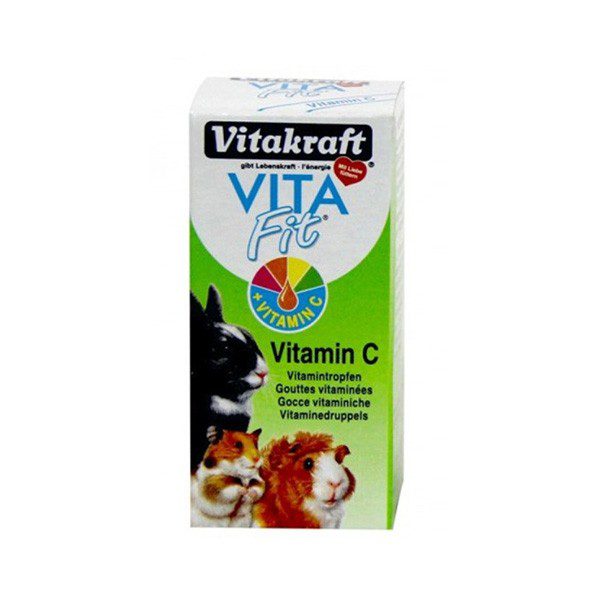
2. Ampoules with liquid ascorbic acid, sold in pharmacies. Experts recommend giving a 5% solution of vitamin C from 1 ml ampoules daily for 10 days, then take a break. Draw the solution into a syringe and drink the pig. Most pigs love this procedure very much, apparently, they like the taste of the solution. If there is only one pig, then it is convenient to buy 1 ml ampoules, since it is better not to store an opened ampoule (the vitamin is destroyed), if there are more pigs, then it is better to take 2 ml ampoules.
If there are difficulties with the syringe and the mumps turns up its nose, you can try mixing the solution with 1 ml of 5% glucose (1 ml of vitamin C + 1 ml of 5% glucose, you can also add 1 ml of water).
The syringe must be thoroughly washed and dried after each use!
2. Ampoules with liquid ascorbic acid, sold in pharmacies. Experts recommend giving a 5% solution of vitamin C from 1 ml ampoules daily for 10 days, then take a break. Draw the solution into a syringe and drink the pig. Most pigs love this procedure very much, apparently, they like the taste of the solution. If there is only one pig, then it is convenient to buy 1 ml ampoules, since it is better not to store an opened ampoule (the vitamin is destroyed), if there are more pigs, then it is better to take 2 ml ampoules.
If there are difficulties with the syringe and the mumps turns up its nose, you can try mixing the solution with 1 ml of 5% glucose (1 ml of vitamin C + 1 ml of 5% glucose, you can also add 1 ml of water).
The syringe must be thoroughly washed and dried after each use!
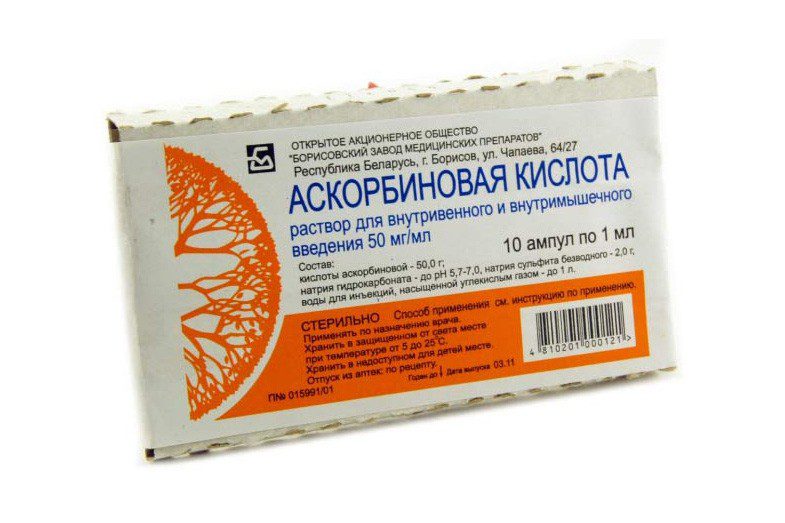
Vitamin C tablets
Some breeders like vitamin C tablets more, as there are no impurities in the tablet form (as in ampoules). By the way, in addition to tablets, powdered vitamin C is also sold in pharmacies, which simplifies the task – you do not need to crush and grind the tablet.
Vitamin C tablets
Some breeders like vitamin C tablets more, as there are no impurities in the tablet form (as in ampoules). By the way, in addition to tablets, powdered vitamin C is also sold in pharmacies, which simplifies the task – you do not need to crush and grind the tablet.
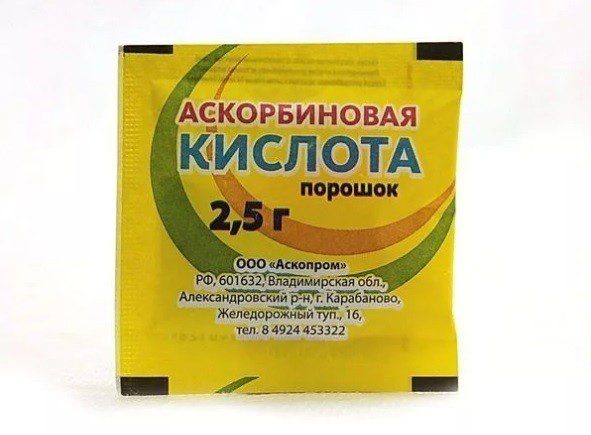
Vitamin C tablets or powder are given to guinea pigs in the following ways:
Method No.1: A crushed tablet or powder, as well as liquid vitamin C, is convenient to add to a drinker. Dosage: 1 gr. per liter of water. A pharmacy bag of powdered vitamin C (2,5 g) goes to 2,5 liters of water.
Method No.2: Another way: pour the powder on the cucumbers. Pigs love these vegetables and will gobble up the vitamin without even batting an eyelid.
Method # 3 (read on a foreign forum): buy vitamin C in chewable tablets (not multivitamins !!!!) 100 mg each. Give a quarter of a tablet (about 25 mg) to the pig daily. Then take a break. Many guinea pigs really like chewable tablets and eat them with pleasure.
Vitamin C tablets or powder are given to guinea pigs in the following ways:
Method No.1: A crushed tablet or powder, as well as liquid vitamin C, is convenient to add to a drinker. Dosage: 1 gr. per liter of water. A pharmacy bag of powdered vitamin C (2,5 g) goes to 2,5 liters of water.
Method No.2: Another way: pour the powder on the cucumbers. Pigs love these vegetables and will gobble up the vitamin without even batting an eyelid.
Method # 3 (read on a foreign forum): buy vitamin C in chewable tablets (not multivitamins !!!!) 100 mg each. Give a quarter of a tablet (about 25 mg) to the pig daily. Then take a break. Many guinea pigs really like chewable tablets and eat them with pleasure.
Vegetables and fruits rich in vitamin C
Vitamin C, as a supplement, is, of course, great, but do not forget about the natural way to get this vital vitamin – vegetables and fruits!
The servings below are approximate values for 10 mg of vitamin C. Note that fruits and vegetables vary in size, so their vitamin C content will vary depending on the size of the fruit.
| Product | Approximate serving. containing 10 mg vitamin C |
|---|---|
| oranges | 1/7 orange (fruit diameter 6.5 cm) |
| bananas | 1 piece. |
| Bell pepper | 1/14 pepper |
| mustard greens | 30 gr. |
| Dandelion greens | 50 gr. |
| White cabbage | 20 gr. |
| Kiwi | 20 gr. |
| Raspberry | 40 gr |
| Carrots | 1/2 piece |
| cucumbers | 200 gr. |
| Parsley | 20 gr. |
| Tomatoes (medium fruits in the season from November to May) | 1 PC. (fruit diameter 6.5 cm) |
| Tomatoes (medium fruits in the season from June to October) | 1/3 pc. (fruit diameter 6.5 cm) |
| Lettuce (green lettuce leaves) | 4 sheet |
| head lettuce | 5 leaves |
| Celery | 3 stem |
| Broccoli inflorescences | 20 gr. |
| Spinach | 20 gr. |
| Apples (with peel) | 1 piece. |
Vitamin C, as a supplement, is, of course, great, but do not forget about the natural way to get this vital vitamin – vegetables and fruits!
The servings below are approximate values for 10 mg of vitamin C. Note that fruits and vegetables vary in size, so their vitamin C content will vary depending on the size of the fruit.
| Product | Approximate serving. containing 10 mg vitamin C |
|---|---|
| oranges | 1/7 orange (fruit diameter 6.5 cm) |
| bananas | 1 piece. |
| Bell pepper | 1/14 pepper |
| mustard greens | 30 gr. |
| Dandelion greens | 50 gr. |
| White cabbage | 20 gr. |
| Kiwi | 20 gr. |
| Raspberry | 40 gr |
| Carrots | 1/2 piece |
| cucumbers | 200 gr. |
| Parsley | 20 gr. |
| Tomatoes (medium fruits in the season from November to May) | 1 PC. (fruit diameter 6.5 cm) |
| Tomatoes (medium fruits in the season from June to October) | 1/3 pc. (fruit diameter 6.5 cm) |
| Lettuce (green lettuce leaves) | 4 sheet |
| head lettuce | 5 leaves |
| Celery | 3 stem |
| Broccoli inflorescences | 20 gr. |
| Spinach | 20 gr. |
| Apples (with peel) | 1 piece. |
The content of vitamin C in 100 gr. VEGETABLES (desc):
| Vegetable | Vitamin C content mg/100 gr. |
|---|---|
| Red pepper | 133 mg |
| Parsley | 120 mg |
| Beetroot | 98 mg |
| White cabbage | 93 mg |
| Broccoli | 89 mg |
| Green pepper | 85 mg |
| Cabbage Brussels | 85 mg |
| Dill | 70 mg |
| mustard greens | 62 mg |
| kohlrabi | 60 mg |
| turnip tops | 46 mg |
| Cauliflower | 45 mg |
| Chinese cabbage | 43 mg |
| Dandelion, greenery | 32 mg |
| Chard | 30 mg |
| Beets, greens | 28 mg |
| Spinach | 27 mg |
| rutabaga | 24 mg |
| Green salad, leaves | 24 mg |
| Tomatoes | 18 mg |
| green head lettuce | 16 mg |
| green beans | 14 mg |
| squash | 13 mg |
| Pumpkin | 13 mg |
| Squash | 13 mg |
| Carrots | 9 mg |
| Celery | 7 mg |
| Cucumber (with skin) | 5 mg |
The content of vitamin C in 100 gr. FRUITS and BERRIES (desc):
| fruit/berry | Vitamin C content mg/100 gr. |
|---|---|
| Kiwi | 62 mg |
| strawberry | 53 mg |
| Orange | 53 mg |
| grapefruit | 33 mg |
| Mandarin | 29 mg |
| Mango | 25 mg |
| Melon | 21 mg |
| Black currant | 16 mg |
| Pineapple | 13 mg |
| Blueberries | 11 mg |
| Grapes | 10 mg |
| Apricots | 10 mg |
| Raspberry | 10 mg |
| Watermelon | 10 mg |
| plums | 9 mg |
| bananas | 7 mg |
| Persimmon | 7 mg |
| Cherry | 6 mg |
| peaches | 5 mg |
| Apples (with skin) | 5 mg |
| Nectarine | 4 mg |
| pears | 3 mg |
The content of vitamin C in 100 gr. VEGETABLES (desc):
| Vegetable | Vitamin C content mg/100 gr. |
|---|---|
| Red pepper | 133 mg |
| Parsley | 120 mg |
| Beetroot | 98 mg |
| White cabbage | 93 mg |
| Broccoli | 89 mg |
| Green pepper | 85 mg |
| Cabbage Brussels | 85 mg |
| Dill | 70 mg |
| mustard greens | 62 mg |
| kohlrabi | 60 mg |
| turnip tops | 46 mg |
| Cauliflower | 45 mg |
| Chinese cabbage | 43 mg |
| Dandelion, greenery | 32 mg |
| Chard | 30 mg |
| Beets, greens | 28 mg |
| Spinach | 27 mg |
| rutabaga | 24 mg |
| Green salad, leaves | 24 mg |
| Tomatoes | 18 mg |
| green head lettuce | 16 mg |
| green beans | 14 mg |
| squash | 13 mg |
| Pumpkin | 13 mg |
| Squash | 13 mg |
| Carrots | 9 mg |
| Celery | 7 mg |
| Cucumber (with skin) | 5 mg |
The content of vitamin C in 100 gr. FRUITS and BERRIES (desc):
| fruit/berry | Vitamin C content mg/100 gr. |
|---|---|
| Kiwi | 62 mg |
| strawberry | 53 mg |
| Orange | 53 mg |
| grapefruit | 33 mg |
| Mandarin | 29 mg |
| Mango | 25 mg |
| Melon | 21 mg |
| Black currant | 16 mg |
| Pineapple | 13 mg |
| Blueberries | 11 mg |
| Grapes | 10 mg |
| Apricots | 10 mg |
| Raspberry | 10 mg |
| Watermelon | 10 mg |
| plums | 9 mg |
| bananas | 7 mg |
| Persimmon | 7 mg |
| Cherry | 6 mg |
| peaches | 5 mg |
| Apples (with skin) | 5 mg |
| Nectarine | 4 mg |
| pears | 3 mg |
When, how and what to feed guinea pigs?
What to feed? When to feed? How to feed? And in general, how much to hang in grams? This is one of the most frequently asked questions by guinea pig owners. And this is understandable, because the health, appearance, and mood of the pet depend on the right diet. Let’s figure it out!



